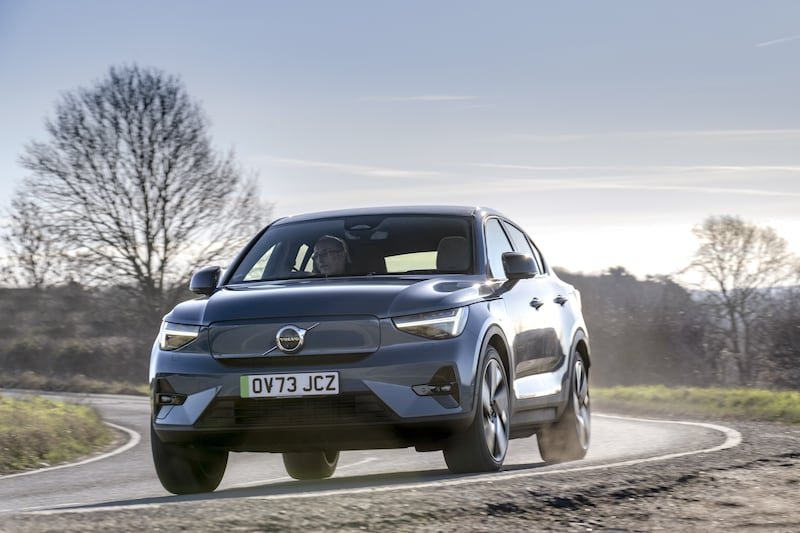We often complain on these pages about how elegance and beauty have been steadily eroded from contemporary car design. BMW and Mercedes-Benz are the textbook study of what has gone wrong; once synonymous with restraint and refinement, their current offerings are mostly a mish-mash of grotesque grilles, gauche ornamentation and a forgotten sense of proportion.
Cars like the Volvo P1800 are a reminder of what has been lost. Introduced in 1961 and in production until 1973, the P1800 was designed by a Swede, Pelle Petterson, who was a student of Pietro Frua, one of Italy’s leading coachbuilders and designers of the period.

Always pitched as more of a grand tourer than an out-and-out sports car - unlike the racier Jaguar E-Type, which was launched at the same 1961 Geneva motor show - the P1800 was renowned for its style and quality. It was a perfect match for gentleman spy Simon Templar, portrayed by a pre-Bond Roger Moore in The Saint television series.
Although Volvo tweaked the P1800 throughout its lifespan - production was moved from the Jensen factory in England to Sweden, the engine and brakes were updated along the way and in 1972 the coupe body was replaced by a swish shooting brake.
Volvo called time on the P1800 in 1973, deciding it wasn’t worth continuing to develop the car to meet ever-tougher safety and emissions standards in its prime US market.
- Mazda 3: Sweet-driving family hatch is one of the best looking cars on the roadOpens in new window
- Honda Civic: Forget the Volkswagen Golf - the hybrid Civic is now the best family hatchback you can buyOpens in new window
- The Hyundai Ioniq 6 is an aerodynamic EV that looks like nothing else on the roadOpens in new window
And that was that... until a few years ago, when Cyan Racing - a Swedish tuner and racing team synonymous with Volvo - got to wondering what would have happened if the P1800 had remained in production and benefited from technical advances.

The template for this sort of ‘what if?’ thinking is the Porsche 911. Today’s 911 is an entirely different car from the 1964 original, yet there is an entirely credible through-line between then and now in terms of character and feel.
A more recent twist on the theme is the ‘restomod’, where an old car is given a thorough update, maybe with its brakes beefed up, engine tuned and electronics brought up to date. The Porsche 911 is a favourite for this treatment, but everything from the Peugeot 205GTI to the MGB is getting rejuvenated these days. There’s also a burgeoning market in electrifying classics, but that’s another (exclusive and expensive) story.
The engineering poured into the Cyan Racing Volvo P1800 GT is astonishing - as you would expect of a car that takes between 12 and 15 months to build and which has a price tag likely to be north of £500k
But back to the P1800. Cyan Racing’s original take on the classic was firmly in the track-inspired category.
Now it has introduced a GT version, which is more in keeping with the car’s vibe. The engineering poured into the car is astonishing - as you would expect of a car that takes between 12 and 15 months to build and which has a price tag likely to be north of £500k.

“The new version highlights the versatility and almost endless tailoring options of the Volvo P1800 Cyan, adding another dimension to our interpretation of the original model,” says Cyan boss Christian Dahl.
“The joint journey of tailoring a car from start to finish with a client is a thoroughly rewarding process for the entire team, just as it is to see two further cars being shipped to the US.”
Compared to Cyan’s racier original, the GT’s fully adjustable suspension is now set up for “winding country roads and inspiring but comfortable long-distance driving”.
The engine, a four-cylinder 2.0-litre turbocharged unit paired with a five-speed manual gearbox, has been tuned less for raw power and more for drivability, with outputs ranging from 350bhp to 420bhp.

As part of the restoration and modification process, Cyan uses lots of high-strength steel and carbon fibre in the P1800′s body, yielding a sub-1,000kg weight. The roll cage is manufactured from titanium.
Cars of this sort are trimmed to whatever specification the owner desires; the sand-coloured leather and fabric of this metallic green P1800 is a particularly fetching combination.
It helps highlight just how right the design of the 1960s original was, and how elegance of this sort endures. Why have so many car-makers lost their way?



















